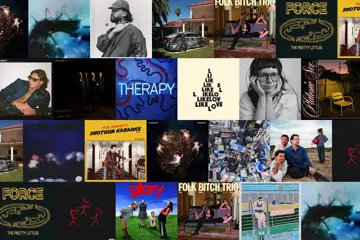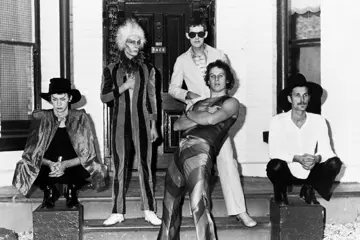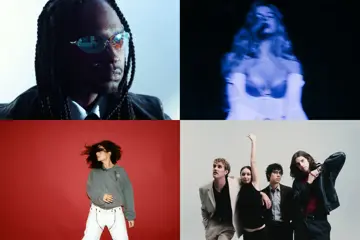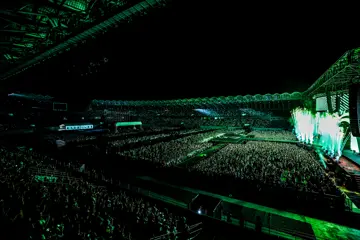The exclusive exhibition of the works of Keith Haring and Jean-Michel Basquiat (alongside other artists of their era, such as Maripol) held by the NGV is a profound achievement on the part of the gallery’s curators. Crossing Lines speaks to the two artists as contemporaries, even featuring collaborative works, such as Untitled (Symphony No 1). Presented chronologically, the exhibition succeeds in capturing something vital about an era, the works on display spanning the range of both artists’ careers, and encouraging audiences to make multiple visits.
While the political messaging and wild experimentation of both artists is irrepressible, there’s something intensely jarring about the works being ripped from their contexts of the streets to hang in the white void of the National Gallery Of Victoria. It doesn’t help that the corporate sponsorship of the gallery is felt everywhere: the radical politics of the artists are often toned down in the gallery notes into vague and palatable platitudes, like “humanist beliefs” or “social justice”. While nobody’s got any illusions about the amount of money needed to put together an exhibition of this scale, there’s something graceless about an acknowledgement of the sponsorship of Mercedes-Benz which claims the designers of the car brand are inspired by the innovation of both artists. The adspeak clashes harshly with work like Basquiat’s Irony Of Negro Policeman and Andy Mouse, a satirical figure used by Haring to make fun of Andy Warhol’s consumerist approach to art. Interventions into multimedia are uneven: a wall of an already crowded room is devoted to digital presentations of both artists’ work with MTV, which is an assault to the senses from all sides. However, a black-lit room used for Haring’s dayglo pieces achieves the kind of immersion that other excursions out of traditional art presentation do not.
Towards the end of Crossing Lines, in the section for each artists’ last works, we find A Pile Of Crowns, For Jean-Michel Basquiat, in the centre of the room. As a tribute to his lost friend, Haring painted a radiating triangular assemblage of Basquiat’s signature symbol. Viewed from the front, Basquiat’s Glassnose and Item are on either side. It’s a touching choice of a final image in the exhibition, and honours both the differences and parallels between both icons.















